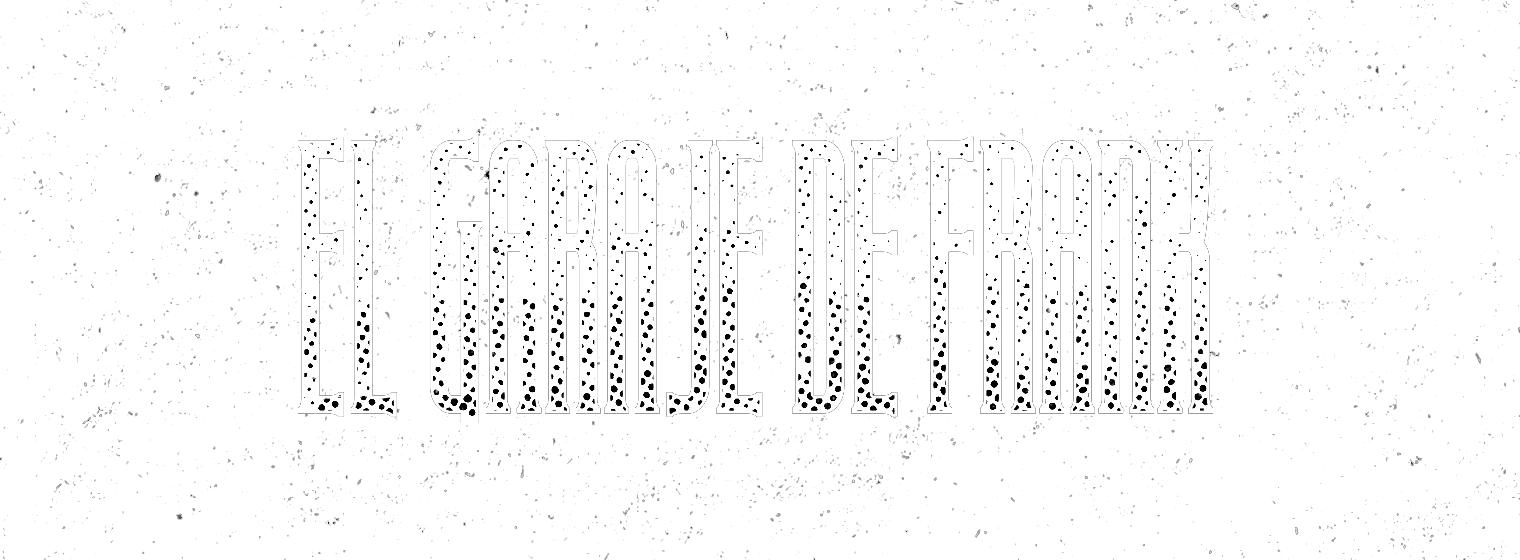Undoubtedly, the Autumn/Linear Movement/Twilight Ritual saga, was one of the most interesting and prolific adventures of what we call minimal synth today. As nexus of the three projects, we can find Peter Bonne, who was also part of the most creative period of A Split-Second. Last year we should have interviewed him, as he played at Ombra with his band Twilight Ritual but sadly we did not have enough time. So, in this interview we are compensating our error talking about all his projects. Linear Movement will play their first concert in 40 years at Ombra Festival that will take place from the 1st to the 3rd of December in Barcelona.
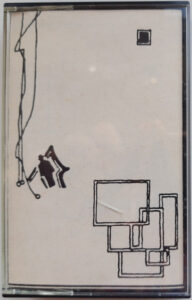 —How did you become interested in the music of Klaus Schulze, Ashra Temple, and Tangerine Dream? How did these artists influence your way of doing music?
—How did you become interested in the music of Klaus Schulze, Ashra Temple, and Tangerine Dream? How did these artists influence your way of doing music?
—It was late 70s and the use of synths created the most innovative and inspirational music style of the time (other than hard rock and disco). The ones you mention are the most known, but there were many great artists working in the shadows. It was a sport to trace them down, find their albums, go to their concerts when it was possible. Underground magazines, even on cassette, spread the word. I listened to them all day, and even had a 3-hour night show on the local radio.
—You met Geert Coppens and created Autumn. You were going together to school, right? Did you become friends because of a shared interest in electronic music?
—That might very well be the case. We shared classroom for a few years. I played a bit of guitar, he got access to an electric bass guitar, my brother played an organ… All that was quite a thing in that time. So, we started jamming and sharing albums and it took off.
—How did the evolution of gear change the music that you were doing at the time? Was it a limitation for you? At the beginning you had to rent the material, right? You were one of the first bands to get a Roland TR 808, weren’t you?
—We were lucky to live the time where every year or so some revolutionary new instrument was released. Stunning, but also frustrating as they were so expensive. Buying one today meant it was old the following year, and as young guys, we did not have that money of course. I remember visiting the music shop after school just to freak out on the newest synths – Polymoog, ARP 2600 -, I was dreaming away. Our real first recording was “She Says”, Geert and myself on guitars and vocals, recoding on a 2-track tape in my bedroom. No synths yet. That was modern and hip, can you imagine? Later on, we could lay our hand on a small synth, the Yamaha CS30, that you can hear in all the early recordings with its sharp sequencer and monophonic solo sounds. From there on, we grew a bit, but mainly got things done through rent and borrowing stuff, still recoding on a 2-track tape with its 2 little mikes. Then, later on, I was able to make a good purchase, and that indeed included the first TR808 (in my country, of course) which I lent out to Marvin Gaye for a while in return for a favourable purchase at the shop. (PS – the shop also delivered to Marvin Gaye, who was living in Belgium at that time to prep for his next release Sexual Healing)
—You have been building your own studios during your long career. Can you please tell us more about this?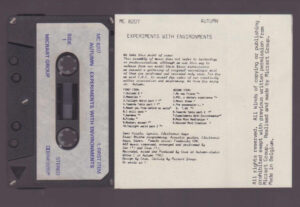
—In the first studios we rather improvised the setups, where gear was organised so we could jam and record easily. From the third studio on, it was a proper studio with 12-channel mixing and 4-track recording. That setup stayed while we added synths and other stuff in and out, until I moved to the Top Studio in Ghent, which was a proper studio. From there on I moved up in professionalism.
—How did you experience the cassette culture of the 80s? Were you in contact with other musicians?
—Oh yes, there was very active communication across the globe between fans, cassette labels, other bands etc. I had a very lively communication during the early 80s. That brought our music onto many compilation cassettes.
—Also, you created Micrart in 1977 that was a kind of non-profit organization. What was your intention when you started it?
—At first it was just a name, Geert’s idea, kind of kid’s initiative to bundle what we do together, but I later made it official as a ‘vzw’, that’s a non-profit org in my country. It allowed us some proper organisation as ownership of materials and publishing rights, etc.
—Your most ambitious event of that time with Autumn was Hard Breakfast, can you please tell us more about it?
—It was ambitious as it was a 3-day concert (3 locations) with 12 participants and a bunch of hardware synths we never saw before. 1981. 17 years old. Crazy. The first night, we could count on tracks we wrote before and tried to play with a little extra using the new stuff. The second day, the new stuff took over and that performance was fully recorded. It helped that we could rehearse all day before the show. Best parts (most improvised) are on that album. We had video projection, jazz dancers, flute, and a f*** delay!!!
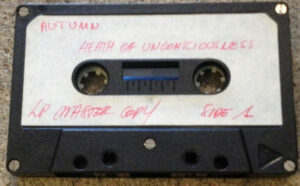 —One of the interesting aspects of Autumn was the capability of improvising between you and Geert. Something that’s not so common nowadays in electronic music. Were you rehearsing a lot or was it just something natural between the two of you?
—One of the interesting aspects of Autumn was the capability of improvising between you and Geert. Something that’s not so common nowadays in electronic music. Were you rehearsing a lot or was it just something natural between the two of you?
—Everytime Geert and I meet, we wrote and recorded several songs a day, for sure. There was no production, editing or arrangement involved, we just started playing, and if we agreed on something good, we continued with that idea until we said: -OK, let’s record it. I’ve got piles of 2-track tapes and cassettes that are filled with recordings like these. Over time, the best recordings were selected and put on cassette, later on CD and now on albums online. It’s indeed problematic today to do that kind of interaction as all is concentrated on one computer, one track at the time. It’s counter-intuitive unfortunately. We try to fix that by using 2 computers, so we can create ideas on our own, and transfer them to the main computer when suitable.
—You just said that there are piles of tapes filled with recordings of Autumn, will we get more material in the future?
—I doubt that. It would take forever to look for the gems I missed before. But there will always be new material, at least for TWR; we don’t intend to stop. It’s just the tempo that is a bit slower, obviously because we got other things to do too.
—In those days you meet Peter Koutstaal who became part of Linear Movement. Was him who added a more pop sensibility to the projects?
—Not necessarily. We had the Autumn and Twilight Ritual projects, and Peter was already involved in Autumn, the later part of it. He was also a school mate and a good keyboard player and added his part to the tracks. But it was really me that wanted to do something more poppy, as Autumn was very cosmic / experimental, and Twilight Ritual had a big sense of art and culture in its veins. As a matter of fact, the Not Afraid To Die album, released as Autumn, is a bit schizophrenic: if you check most tracks, it should have been a Linear Movement release. It kind of showed the way in 82, whereas most of the other LMO‘s works are from 83.
—So Not Afraid To Die a prelude or an influence of what Linear Movement would become later?
—Indeed, it was a prelude, though we didn’t know that yet at the time.
—Another curious project was “Meditation Of The Lost”, released under the Autumn name where you played only accompanied by a jazz dancer on stage and the music was more “new age”. Can you please tell us more about the concept behind this new idea?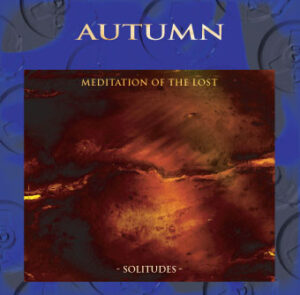
—Not much of a concept I’m afraid. I felt a bit lost as a girl dumped me, what else would an 18-year-old feel? So, in my case, I expressed that playing music and I created a bunch of tracks that eventually resulted in a live performance of two parts of 45 minutes and indeed accompanied only by a lady jazz dancer that was present at our Hard Breakfast shows. 2 CDs came out of it, the original ‘short’ tracks and the melted-together live versions.
—According to you, was Experiments With Environments the masterpiece, the summon of what Autumn was?
—It might be, as it’s a collection of tracks recorded over quite a year or so, and it does present Autumn in its variety of faces – experimental, very melodic, synths and guitars alike. It’s the only album that is not associated with a specific event. But it tough to say that it’s the summum of what we did.
—Way before the fashion of doing soundtracks for films you did Metropolis and even before some music for an 8mm movie by Jan Verheyen. How were these experiences? Did they change your way of composing? You had some problems because at the same time another soundtrack for Metropolis with some awful songs by Queen and Pat Benatar was released, right?
—First of all, Jan Verheyen is a successful movie director today, and we happened to share the same classroom at a certain moment. He was experimenting with making his first movie at school, and I got the opportunity to write some music for it. Most of it is on the I Invite release. We were just 17. It got me to a studio for the first time, with the most stunning set of synths. You can here that on “Pictures Theme” (guess which picture the title refers to 😉 )
Metropolis is another story. Geert is an art historian and was captivated by the silent movie scene of the 20s, the expressionist movies of which Fritz Langs “Metropolis” was the pinnacle. Since only very old traditional soundtracks existed, we wanted to take the challenge to write and perform a novel soundtrack.
When we performed that soundtrack live, Jan was present, and he had just came back from a film festival where Giorgio Moroder‘s version was presented with tracks from indeed Queen etc. He was convinced that our interpretation was much better. Unfortunately for us, all rights were then restricted, and we could not perform anymore without risking penalties or even court. Our album releases now refer to Metropolis but not explicitly as “the soundtrack to.” Too bad, because of the prep of over 6 months, it kind of killed Autumn right there.
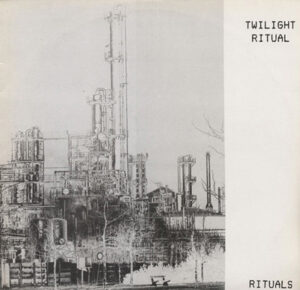 —You also started a project called Twilight Ritual (and played with it last year at Ombra). You said that the music of TR has more spirit and personality. Can you please explain this?
—You also started a project called Twilight Ritual (and played with it last year at Ombra). You said that the music of TR has more spirit and personality. Can you please explain this?
—Twilight Ritual was Geert’s idea. He and I make music without any effort at all. But Autumn had a style, and he wanted to bring on board more art, culture and alternative stuff as his interests laid very much in that direction. Geert was an art historian, which fits very well. So TWR is indeed only him and me and has a special twist around it. Whereas other projects have less “engagement” and are free to interpret, TWR looks for a character and personality that is more present in its work.
—One of Twilight ritual albums appeared in Spanish label Auxilio de Cientos, that also released one of your tracks in a compilation. How did they contact you? Did you follow the music of the label?
—Through my international mailing and conversations, Javier Marín and I met, and he wanted to release TWR on his new label. We were just working on the newest materials of Twilight Ritual and that stuff got released on the album. In an art show, Geert found this super picture of the Ghent industrial harbour, and that became the cover. It became a collector’s item over time, and we’re proud of it. Probably the most unique work TWR has ever made. We still get comments today on how some people got influenced by this album and started to make music because of it. Absolutely stunning!
—After a hiatus when you focused on A Split-Second you came back to TR. Did you see it as your best way of expressing your musical ideas?
—Things changed for practical reasons. Geert went to university in one town, I went to another one. To continue was a bit difficult after that. I also had to move my ‘studio’ once again. Hence, I landed in Ghent’s Top Studio, where TWR made some recordings. But I was also engaged already with another classmate of mine which finally resulted in A Split-Second. That became so successful that it ate much of the time. Geert was still involved as he made most of the cover artwork.
In 90-91 I found a way to build a brand-new studio, this time with proper material such as a 32-track inline mixing desk and a 1-inch 16-track recorder. Having my own place again allowed TWR to come back. I told Geert: “It’s been a while, but let’s try if we can still do it.” And it went great. We started working on new tracks that resulted in a whole new Twilight Ritual album called Organic, an album with a spot-on title. TWR guarantees artistic freedom, but lyrics and melodies remain always important. Freedom can also result in total mess, which is not TWR at all. It has to be good.
—How was working again as Twilight Ritual in Organic?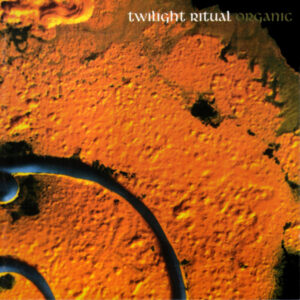
—Fantastic. We could not go back to the old days, as music has evolved, and so had the tech. So, we reinvented the band and wrote a completely different set of tracks eventually becoming Organic but still 100% TWR.
—Any news about Twilight Ritual new material?
—You bet. There’s a new album as good as ready to be released right now. Probably official by 2024.
—Linear Movement was first called Pulse Music, right? Why did you change the name? With that name you released the only cassette in 1982, right?
—Pulse Music was the title of the first cassette, a C30, so 15 minutes each side. That’s all we had at that time. I kept the title for the later album.
—Linear Movement was your more song-oriented/pop project. Did you enjoy more composing experimental music or pop songs?
—I personally enjoyed all projects I did, why else would I do it? But here’s the thing: synths are all around. Creating sounds is still challenging, but the bigger challenge is to do something valuable with it. That what I wanted to improve with LMO: song writing, production, arrangements, those were the next things I needed to learn. Not that we didn’t do that earlier, but I wanted to put more focus on it for myself. Just look at the complexity of ‘Way Out Of Living”. That’s quite different from the early Autumn work, isn’t it?
—You recovered the music of Linear Movement in 2003 with a compilation released on Micrart, just a couple of years before the interest in all the minimal wave movement. Did you ever think that your music was going to be trendy again?
—Not at all, I just wanted to keep my old stuff a little bit alive. I needed to update the format on which music was shared. Vinyl albums were always very difficult, but now ad-hoc CDs became available, so that was the way to go. A pity you can’t do that anymore today. But I do believe it paved the way for more people to find the music, eventually being picked up by major labels or initiatives. Never thought that would happen though.
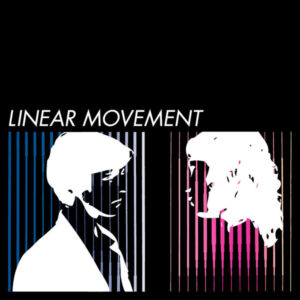 —But I guess it was the Minimal Wave compilation that made you more famous. Veronica has also released an Autumn album. How did she contact you? Were you part in the selection of the tracks?
—But I guess it was the Minimal Wave compilation that made you more famous. Veronica has also released an Autumn album. How did she contact you? Were you part in the selection of the tracks?
—I think she sent me an email, just like that. At that time, she had her radio show in East Village NY, a place where we played live with A Split-Second a few times, years before. So yes, we assembled the tracklist together though she was the head editor. It did seem to have made waves in the newly formed “minimal music” world. So crazy, I saw a video recording of “Night In June” played in a Costa Rica dance place. And no-one wanted those tracks in the 80s – amazing!
—Are you planning to release more material (new or old) with the Linear Movement name?
—Very tempting. I don’t know yet. Most if not all old stuff has been released, so I’m not sure what we’ll do. Let’s first see how the live show goes.
—Going back to other of your projects, in the mid-eighties you focused on A Split-Second. Was it too demanding or did you think that you had enough of the other three projects?
—Well, at that time, the other projects were dead. Especially since Geert was too far away for his studies. And also, A Split-Second took all of my energy, but also allowed a fast growth in professionalism. I did the co-writing, engineered a pro studio, did the arrangements, recording, production, mixing and remixing. We experimented with the newest samplers (brand new tech at that time) and effects to make damn interesting tracks for the dancefloors. And we did it! I brought all that to the later works of TWR and Wasteland.
—Do you think that Flesh was an important release for the development of New Beat?
—People told us it was. I don’t think it’s up to me to judge that, but hey, if you’re considered to be one of the founders of the only musical hype from this country, who am I to say no? So yes, it left a mark, but I have double feelings about it. Only now, A Split-Second is being recognised for its true value, away from the New Beat hype from those days.
—Later you also produced some new New Beat singles as Pick A Number and New Busters, but you did not like the style very much, right?
—Correct, I helped a few friends, did some side projects “for the fun of it,” but I never liked New Beat. It was way too brainless if you ask me.
—What was your favourite A Split-Second material?
—That’s a tough one. A couple tracks stand out: “Flesh” of course, but I believe “Rigor Mortis” is the eternal track. And of course, “Mambo Witch,” “Firewalker,” “Colosseum Crash,” “Drinking Sand” are evergreens.
—Why did you leave A Split-Second?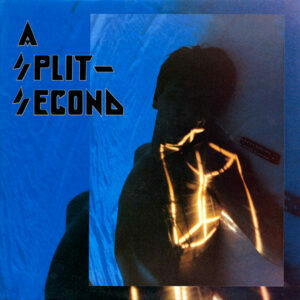
—Well, it happens that people differ in vision on what to do next and want to go different ways. Today I’m remastering the old tracks and finally making them available on the streaming platforms.
—Do you think that your other project Wasteland deserved a better luck? Are you going to have these tracks released again?
—Ah yes, we almost hit the top with Wasteland. By missing a big deal, we kind of let it go, and that ended it. Unfortunately, because there were still many options. And yes, I plan to release all the tracks sometime. I’ve got all the rights, and I’ve got the opportunity to remix them too. I believe that’s required as the old recording really start to sound old. And as a tribute to my old friend that died last year, great singer and songwriter Alain Allaeys.
—Another side project is Chayell Zen, where, as you said, you have combined your first love for cosmic music and your aim of making your children sleep. What can you please tell us more about this?
—Well, that’s something different. You know, I’ve heard so many times that much of the music I’ve made is ‘visual,’ belongs in a ‘movie’ of some sort. D(ayd)reaming is also visual, so why not? On the other hand, it may not be ‘gratuitous.’ Anyone can buy a Mac, launch Logic, and create a dreamy track. But that is not good enough. I like to put a twist in it, e.g. a totally distorted echo on a smooth piano.
—What can we expect of Peter Bonne in the future? Maybe a tour playing the Autumn material? Maybe next year at Ombra?
—Linear Movement is planned for OMBRA this year, December 2023. I’ve found Lieve (who did a lot of the singing back then) willing to join in again, and that’s going to be really unique as we haven’t played together for 40 years!! After that, who knows!
—And how is going to be your concert at Ombra?
—Fabulous of course!
